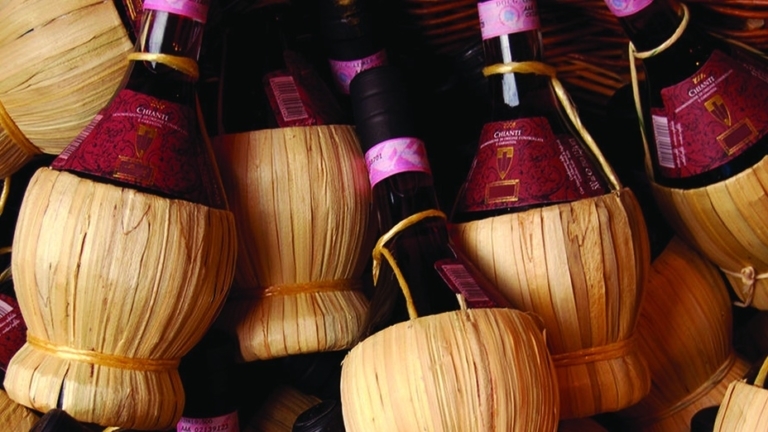
Chianti – The Perfect Wine Pairing for Any Dish

As a wine, Chianti is as essential to Italian cuisine as extra virgin olive oil. Indeed, there are few pleasures as distinct as a tart, spicy, herbaceous Chianti wine paired with a plate of sliced prosciutto (cured ham) or one of your favourite pasta dishes.
Once traditionally served in a basket-encase bottle, the Chianti is considered to be one of the best wines to be served with a meal. A blended red from the Chianti region of Tuscany, it is made primarily with a thin-skinned grape called Sangiovese, which is found only in this particular part of central Italy.
Known for its mouth-watering acidity and coarse tannin, the grape bestows a transparent ruby hue and flavours of black and red cherry. With such a savoury blend, the wine can be paired easily with food as its high acid level cuts through the richer fatty dishes and stands up well to tomato sauces. Other popular Chianti pairings include pizzas and such meaty fare as a well-seasoned steak.
Also Read: Organic, natural, biodynamic wines, explained

In addition to the Sangiovese grape, Chianti may contain traces of other red grapes, notably Canaiolo and Colorino, as well as such white grapes as Trebbiano and Malvasia. It is, however, the Sangiovese grape that dominates while also being seen as the most authentic embodiment of the Chianti terroir.
As with many fine wines, Chianti is subject to many requirements and has spawned a number of variations. There are, for instance, several categories of Chianti that vary depending on how long it has been aged as well as in accordance with the precise sub-region of Tuscany it originated from.
Also Read: Sustainable Wines: Ethically sourced ingredients offer imbibers healthier options

Ageing and Classification of Chianti Wine
In many ways, it is the ageing process that determines exactly how an individual Chianti might taste. For example, “Chianti” is aged for six months and has a young and tart taste, while “Superiore Chianti” is aged for a year and has a taste that is smoother and more acidic. “Riserva”, meanwhile, is aged for two years, and the “Gran Selezione” is aged for more than two years and is used in such top-of-the-range Chianti wines as “Chianti Classico”.

Chianti wine also has several sub-regions. The original is Chianti Classico. Each subregion or subzone has different minimum ageing requirements, which is said to be an indication of quality. Variations in soils and elevations; and proximity to the sea also give rise to the distinct flavours of a particular wine.
- Colli Senesi: Aged for 6 months
- Colline Pisane: Aged for 6 months
- Montalbano: Aged for 6 months
- Montespertoli: Aged for 9 months (minimum)
- Classic: Aged for a year (minimum)
- Rufina: Aged for a year (minimum)
With its highly acidic, tarty-juicy attributes, this ruby red wine with flavours of cherry and earth, Chianti is the ideal accompaniment for a diverse array of dishes. To fully appreciate this, though, it is highly recommended that you try it for yourself.
Also Read: Champions of the Cape: Spotlighting South African Wines
(Text: Peter Chan)







